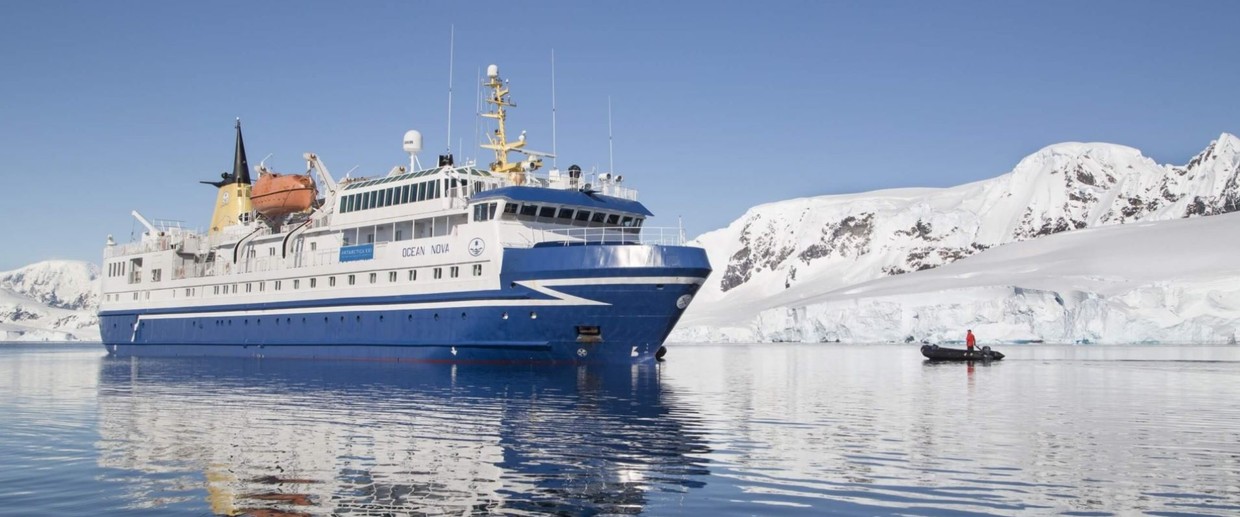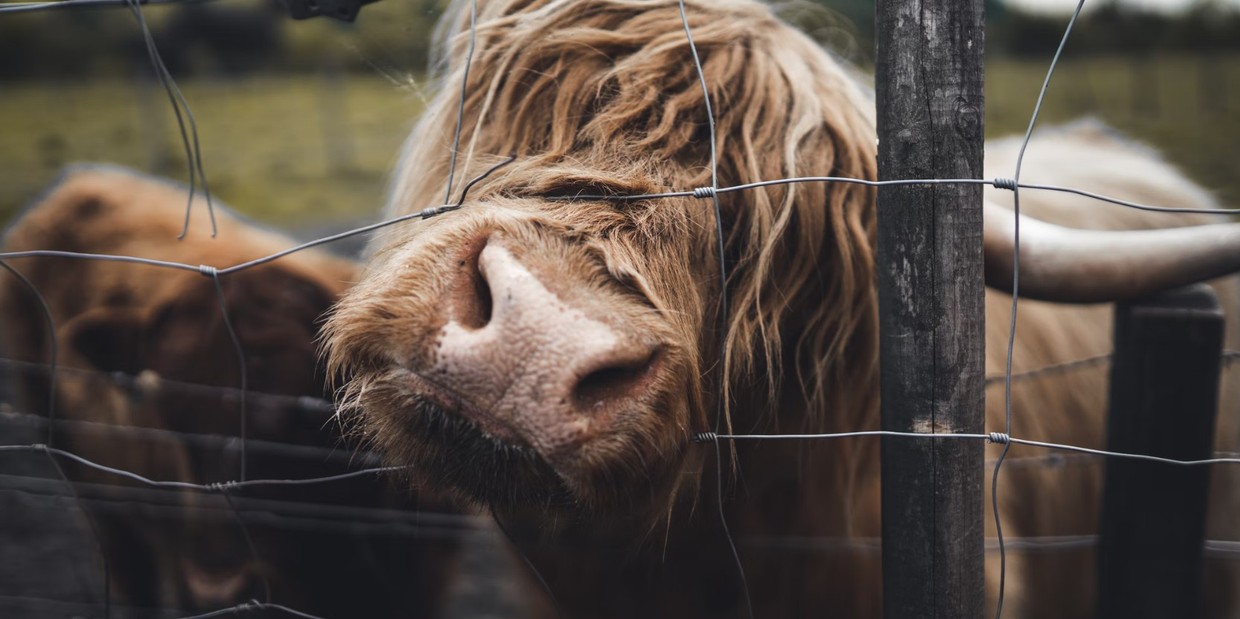from$ 7944 AUD
Note: Current p/p indicative rate. Final price may change due to currency fluctuations.
Ocean Nova
Oban to Aberdeen
Overview
Scotland’s magnificent coastline is an indented landscape of enormous natural splendour with offshore islands forming stepping stones into the Atlantic and this voyage will appeal to those who want to explore the wonderful scenery and the abundant bird and wildlife. If you have always had a hankering to visit some of the remotest and most inaccessible islands in Scotland, this is the ideal opportunity visiting as it does the majestic Hebrides, Orkney Islands and the Shetland Islands. Join us aboard the 84-passenger Ocean Nova as we sail from the port of Oban to the islands on the edge, visiting both inhabited and uninhabited islands and places of great natural beauty, rich in wildlife and many with a long history dating back to the Iron Age. Few cruise ships offer the chance to explore the islands off the northern coast of Scotland and our unique expedition combines visits to the remote, uninhabited outposts of Mingulay and St Kilda with the historically significant sites on the Isle of Lewis and the Orkney Islands with their incredible wealth of pre-historic archaeology. We will witness vibrant colours and amazingly prolific birdlife, explore deserted villages and learn of the history and ancient culture of unique island life. Such a trip would be almost impossible to arrange independently and requires a small ship with the expeditionary qualities of the Ocean Nova. With just over eighty travelling companions, the atmosphere on board is convivial and when ashore with our local experts and expedition team, we will divide into small groups thereby enjoying a comprehensive and peaceful experience.
Departures
Cruise Itinerary
Embark the Ocean Nova this afternoon. Transfers will be provided from Glasgow Central Railway Station and Glasgow Airport at a fixed time. Enjoy welcome drinks and dinner as we sail this evening.
Gigha is a place apart; heather covered hills, deserted beaches and a single lane verged with wildflowers that meander for some six miles between cottages and farms. Privately owned by its 120 inhabitants, it is a gem of a place and somewhere not easily forgotten. After landing by Zodiac, we will walk to the gardens of Achamore House where the Horlick family have created a lovely and eclectic garden with their collection of azaleas, rhododendrons and exotic plants. This afternoon we will use our Zodiacs to land on Islay where during a visit to a distillery, we will learn about the production of the island’s single malt whisky and enjoy a tasting.
At first light we arrive at Staffa where the perpendicular rock face features an imposing series of black basalt columns, known as the Colonnade, which has been cut by the sea into cathedralesque caverns, most notably Fingal’s Cave. Weather permitting, we will use our Zodiacs to explore closer. Continue to Iona which has been occupied for thousands of years and has been a place of pilgrimage and Christian worship for several centuries. It was to this flat, Hebridean island that St Columba fled from Ireland in 563 and established a monastery. Here his followers were responsible for the conversion of much of pagan Scotland and Northern England. No less than 62 Scottish Kings are buried in the Abbey. Visit the Abbey or perhaps walk along the white sandy beaches or go in search of the corncrake amongst the irises. Our day ends at the Treshnish Isles, an archipelago of uninhabited volcanic islets. The island of Lunga is the largest of the Treshnish Isles in Argyll and Bute. Of volcanic origin, Lunga has been described as ‘a green jewel in a peacock sea’ and is a summer nesting-place for hundreds of seabirds.
Awake at our anchorage in lovely Loch Scavaig. Just beyond is the freshwater Loch Corruisk with its breathtakingly beautiful view over the Cuillins. This is great walking country, but for those who prefer a less energetic morning our Zodiacs will explore the coast looking out for seals. Sail over lunch to the Small Isles for an afternoon on Rum which is a nature reserve. We will walk the nature trail, a beautiful area of wildflowers and typical Scottish island scenery. This lovely island is also a bird watcher’s paradise.
Spend the morning at Barra which is near the southern tip of the Outer Hebrides and visit Castlebay which curves around the barren rocky hills of a beautiful wide bay. Here we find the 15th century Kisimul Castle, seat of the Clan Macneil and a key defensive stronghold situated on a rock in the bay. During lunch we will sail the short distance to Mingulay, which is nearly 1600 acres and the largest of the group of islands south of Barra. Its towering cliffs and stacks face the Atlantic whilst the east side gradually slopes down to the sandy beach of Mingulay Bay. Despite there being a continuous population on the island for at least two thousand years, evacuation began in 1907 and the island was completely abandoned in 1912. Ruins of the village remain close to the shore which we will explore on a guided walk. The islands are also a nature reserve with important breeding populations of razorbills, guillemots, puffins, fulmars and shags.
Arrive over breakfast at St Kilda, a remarkable uninhabited archipelago some fifty miles beyond the Outer Hebrides. Dominated by the highest cliffs and sea stacks in Britain, Hirta, St Kilda’s main island was occupied on and off for at least two thousand years, with the last 36 Gaelic speaking inhabitants evacuated at their own request in 1930. Immediately after the evacuation, the island was bought by the Marquess of Bute to protect the island’s thousands of seabirds including puffin and fulmars, and in 1957 it was bequeathed to The National Trust for Scotland. St Kilda is one of only a few UNESCO World Heritage Sites with dual status reflecting its natural and cultural significance. The local ranger will join us on board before our expedition staff lead a number of guided walks on the island. This afternoon we will cruise past two of the largest gannetries in the world at Stac Lee and Stac an Armin. These impressive stacs rise 170 metres from the sea and are home to up to 60,000 breeding pairs of northern gannet.
On leaving the island capital of Stornoway, we will head across the island to the beautiful west coast. Described as Scotland’s Stonehenge, the Callanish Standing Stones date from around 3000 BC. There are a total of 32 stones in a circular and avenue design. The stones stand like a petrified forest on the flat top of a peninsula which reaches out into East Loch Roag. We also visit the Dun Carloway Pictish Broch, probably built sometime in the last century BC it would have served as an occasionally defensible residence for an extended family complete with accommodation for animals at ground floor level. Our final stop is the Gearrannan Blackhouse Village, a reconstructed settlement of traditional black houses which were made using dry stone masonry and which have thatched roofs, distinctively weighted down with rocks. Visit the small museum, enjoy a display of a typical crofting activity such as weaving and take in the views of this dramatic site on the wild Atlantic coast. After lunch on board the afternoon is free to explore the town at your own pace.
From the Orkney capital of Kirkwall we will head into the west of Mainland, Orkney’s largest island. We will pass through gentle rolling landscape and into the Neolithic Heartland of Orkney; an area designated as a World Heritage Site due to its wealth of pre-historic archaeology. We will see the Standing Stones of Stenness and the Ring of Brodgar which is a huge ceremonial circle of stones dating back almost 5000 years. We continue to the 5000-year-old village of Skara Brae and see the remarkable dwellings revealed from beneath the sand dunes by storms only 150 years ago. This afternoon is free to explore Kirkwall independently, maybe take the chance to explore St Magnus Church which dates back over 900 years.
From our berth in Lerwick, we will visit the remarkable archaeological site of Jarlshof. The site was uncovered by a violent storm in the winter of 1896/7, revealing an extraordinary settlement site embracing at least 5000 years of human history. The site contains a remarkable sequence of stone structures – late Neolithic houses, a Bronze-Age village, an Iron-Age broch and wheelhouses, several Norse longhouse, a Medieval farmstead, and the 16th century laird’s house. Alternatively spend time exploring this historic port independently. Perhaps wander through its narrow stone lanes or maybe visit the excellent Shetland Museum which contains artefacts from shipwrecks and the whaling era. In the early afternoon we will sail the short distance to the island of Mousa where we will see the forty-foot defensive tower built by the Picts more than 2000 years ago, and the tallest, best preserved example of an Iron Age broch (tower) in Britain.
Anchor this morning off remote Fair Isle. Located midway between the Shetland and Orkney Islands, the tiny population of sixty or so islanders always extend us a warm welcome. Enjoy a walk across the island searching out the puffin slopes, perhaps visit the community hall for a cup of tea or maybe purchase some of the famous knitwear. Sail this afternoon back to the Scottish mainland.
Disembark this morning. Transfers will be provided to Aberdeen Airport and Railway Station at a fixed time.
Itineraries are subject to change.
Ocean Nova

Vessel Type: Expedition Length: 73 metres Passenger Capacity: 86 The ice-strengthened expedition ship Ocean Nova was built in Denmark in 1992 with high ice class to serve Greenland’s west coast. In 2004 to 2005 she was completely refurbished and has now a career as a small and comfortable expedition ship. The Ocean Nova accommodates 86 passengers in single, double and triple cabins, all with sea-view and private facilities. The double cabins have either two lower beds or upper and lower beds. The triple cabins have upper and lower beds. In your cabin you will also find a desk with chair and ample storage space for clothes and equipment. In the dining room you are treated to delicious meals in between landings and in the panorama lounge you can enjoy a drink with a breathtaking view of the surrounding polar landscape. This is where PolarQuest’s on board specialists entertain and educate you with lectures on polar biology, history, geology and conservation. There is also a library with panoramic views and a good selection of polar books. On board there is a satellite phone, gym and medical doctor. Passengers are welcome on the bridge around the clock and there is always something to see or search for from the spacious observation decks. The ship has North European officers and there is a friendly and informal atmosphere on board. Travelling with this small expedition ship offers an entirely different experience and perspective than you can get on a larger and more conventional cruise ship. Ice Class: Ice 1B, E0 (Hull Ice 1A)
Highlights
• Gigha & Islay, Inner Hebrides • Staffa, Iona & Lunga • Loch Scavaig & Rum • Barra & Mingulay • St Kilda & Stac Lee, Outer Hebrides • Kirkwall, Orkney Islands
Map



